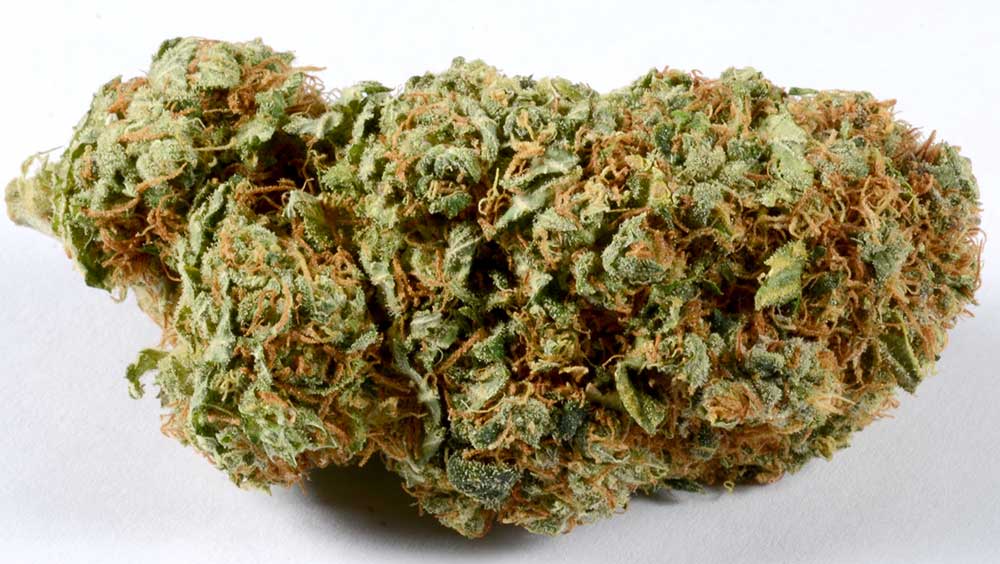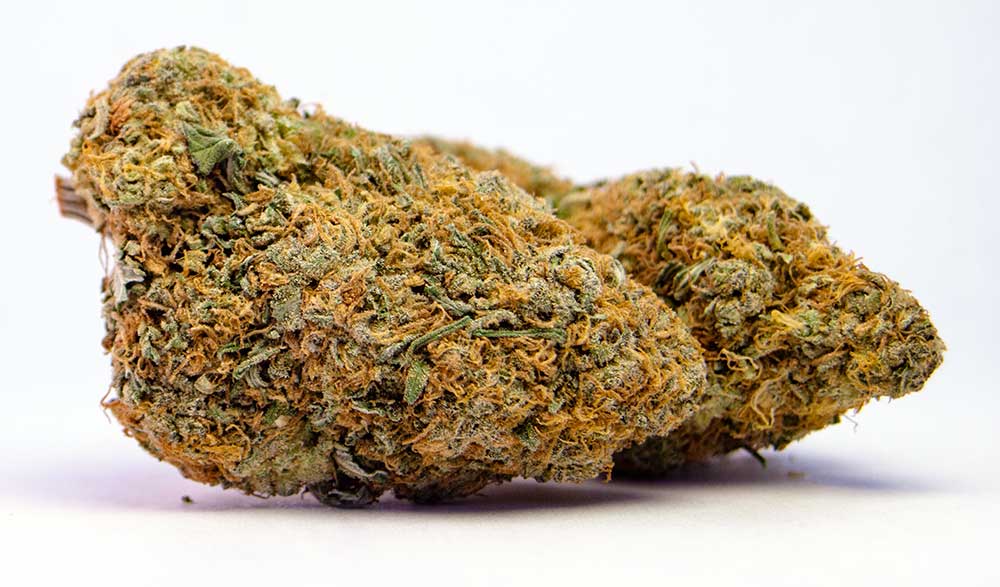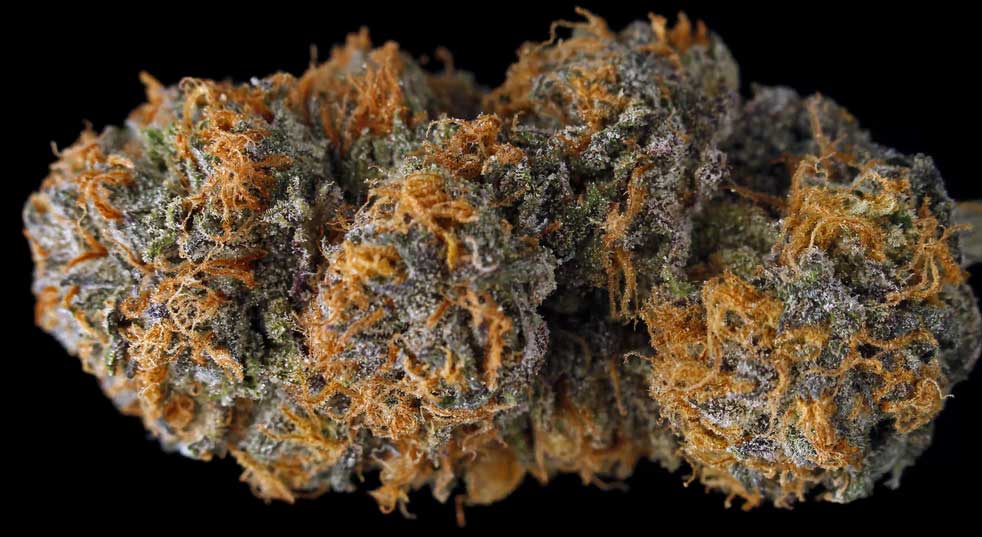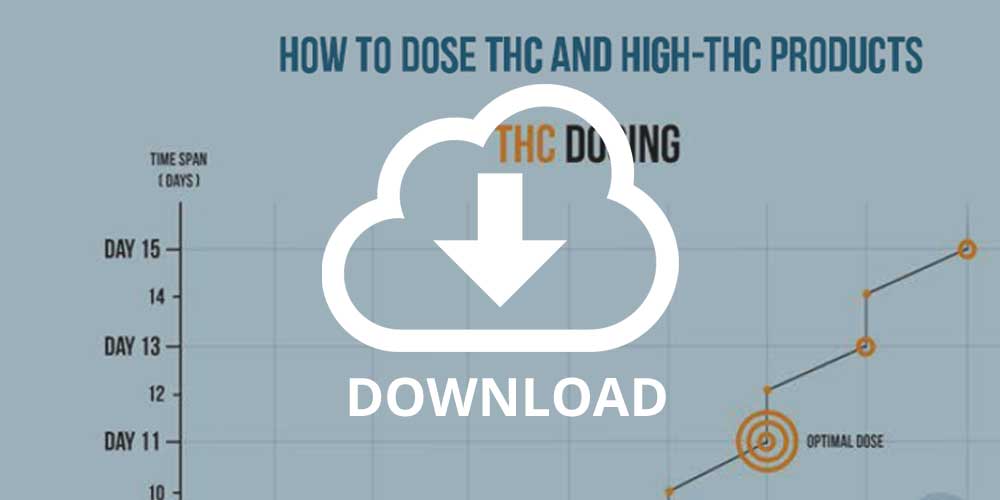Sleep issues can be a real torture—when you experience a lack of rest your body and, more importantly, your mind is unable to function normally. This can have devastating effects on your general well being.
Before we explain how cannabis can be beneficial for alleviating insomnia, we’ll discuss insomnia in general and outline some of the main causes of sleeplessness.
What is insomnia?
Insomnia (otherwise known as sleeplessness) is a sleep disorder defined by either having difficulty falling asleep or difficulty remaining asleep.
The aftermath of insomnia usually includes daytime drowsiness, depressed mood, irritability, low energy levels, and a generally pessimistic and negative attitude.
The potential hazards of insomnia can include difficulties with learning and maintaining focus, and impaired motor skills which can lead to serious accidents.
Insomnia is associated with stress, chronic pain, heart disease, menopause, and can also be caused by excessive use of caffeine, alcohol and nicotine.
The best way to treat insomnia without resorting to the use of prescription medication (which can be addictive and can have serious side effects), is to practice good sleep hygiene, which is a regular daily exercise regimen, frequent exposure to sunlight, and a consistent bedtime and wake up routine.
The state of your bedroom is also very important, it should be clean and well aired out, quiet and dark.
Insomnia usually affects the elderly more than young people, but over the last decade, increasing numbers of young people are being afflicted. Studies also suggest that women are more likely to experience insomnia, as a result of their sleep cycle running earlier than men’s.
There are several different types of insomnia.
Sleep-onset insomnia is manifested by being unable to fall asleep at the beginning of the night’s rest and is closely associated with anxiety-related disorders.
Maintenance insomnia is the inability to remain asleep. People who suffer from this type usually don’t have problems with sleep-onset, but once they fall asleep, they wake up very easily and have a very hard time falling back to sleep.
Acute insomnia is a brief episode of sleeplessness, usually caused by a dramatic event, either positive or negative. There is usually no need to treat acute insomnia since it generally resolves by itself.
Chronic insomnia, on the other hand, is a long-term disorder, doctors usually categorize chronic insomnia as having issues sleeping at least three nights per week, over at least a three-month period.
And lastly, co-morbid insomnia is when your sleeplessness is linked with another condition, such as depression or anxiety, which are both known to cause problems with sleep. Chronic pain is also closely connected with insomnia, chronic pain sufferers are often unable to completely relax and fall asleep because of the pain they’re experiencing.
Here’s how to properly use marijuana for insomnia
Exclusive bonus: Download a free dosage guide that will show you how to treat insomnia with cannabis. This is the same process Dr. Dustin Sulak used to successfully treat more than 18,000 patients with cannabis.
Marijuana can be used to battle insomnia. But it’s important to choose the right variety of cannabis and to consume the right amount at the right time.
Science behind the deep sleep of cannabis
There are four main phases of sleep, which include:
- The half-awake stage (first 10 minutes of sleep)
- The light sleep stage (heart rate slows down, body temperature drops)
- The deep sleep stage (35-45 minutes after falling asleep, it’s the most important part of our sleep, where real rest happens and the body creates the energy for the following day)
- The REM (rapid eye movement) stage (dreams start occurring, usually happens after 90 minutes of deep sleep)
When we are under the influence of cannabis (THC to be more exact), research has shown that we fall asleep more quickly, which lets us spend more time in the third phase of sleep. This increases regeneration and heightens energy levels during the following day.
That extra time spent in the third sleep phase also diminishes the duration of the REM stage and because of this many of us have the impression that we don’t dream when we’re high.
Which type of pot should be used
In case you’re unfamiliar with the classification of cannabis you can find out all about that topic here, but for insomnia, all you need to know is that indica flowers are the way to go, as they have the strongest sedative qualities.
Indica flowers tend to have a really dark-green shade, unlike the sativa strains, which are vibrantly light-green.
The bud structures of the two subspecies are also quite different, the indica flowers have a condensed and firm bud form, while sativa flowers are looser with a string-like appearance.
Smoking indica-dominant hybrids is also an option, but pure indicas are definitely the best possible solution for insomnia because the balance between cannabinoids and terpenes in indica varieties offer the greatest relaxation and serenity.
When to smoke (or vape)
Aside from choosing the correct strain, it’s also very important to perfect the timing of cannabis ingestion to get the best results. Quantity is the third crucial factor, but we’ll get to that a bit later on.
I suggest that you smoke a medium-sized joint anywhere from 60 to 90 minutes before the time you want to fall asleep.
Vaping is also a good choice (if you find a good vaporizer like Pax 3 for example), but you should definitely steer away from edibles if you’re consuming cannabis for insomnia because the duration and intensity of the high caused by edibles are just too great for this specific need.
The reason why you should wait an hour or an hour and a half between the smoking/vaping session and going to sleep is that you need to give your mind some time to overcome the psychoactive sensations of THC.
For instance, if you go right to bed after smoking, your brain will be running like crazy, even though your body is pleasantly calmed and relaxed. This is because THC causes the breaks between the firing of neurons to become practically non-existent, and because of this we get the impression that we’re thinking very fast, and in fact we really are.
If you want to find out more on this subject, and several other canna-related phenomena head to the article on the connection of cannabis and creativity.
Besides the quickness-of-the-mind effect, indica will also produce a powerful couch-lock feeling, which can be described as a very sedated bodily sensation, extremely suitable for the slumber you’re trying to induce.
The trick is to wait for your body to “spend” all the THC, and just slip into sleep while the “couch lock” is still happening.
Personally, I can have real difficulty moving from the couch to my bed, let alone going to brush my teeth and floss, that is how sedating a good indica can be.
The Promise of Cannabinol (CBN)
Cannabinol (CBN) is one of the cannabinoid compounds unique to cannabis and is a minor constituent of practically all Indica strains.
Just like CBD, CBN doesn’t produce the potent mind-altering effects of THC, but it offers numerous health benefits including anti-insomnia, anti-inflammatory, antibacterial, pain diminishment and also acts as an appetite stimulant.
Cannabinol is found in very minuscule amounts in every strain that contains it (around 1%), and to my understanding growers haven’t started experimenting to bring about more CBN in plants, nor are there any CBN extracts or oils yet.
CBN was actually the first isolated cannabinoid (long before THC and CBD), and what’s also pretty interesting about this compound is that THC turns into CBN after long exposure to air (or more precisely, oxygen).
These two cannabinoids are almost identical, except for 4 hydrogen atoms that THC molecule has, which get separated from it after prolonged exposure to air, light and heat.
THC molecules lose their hydrogen atoms over time and become CBN compounds, and because of this badly stored cannabis is far more sedative than when it’s properly kept – because THC transforms into CBN.
I do not advise you to leave your pot for long periods of time in the open, as mold or other fungi cultures can start developing on it (especially if the area is humid and warm), which is definitely not good for you.
Best cannabis strains for insomnia
I’m going to recommend some strains perfect for inducing sleep but if you’re unable to find any of these strains in your area, just stick to purebred indicas – indicas are absolutely the best choice for relaxation and sleep.
Purple Kush

With a whopping 27% tetrahydrocannabinol, this full-blooded indica is a mixture of Hindu Kush and Purple Afghani. As one of the most popular sedative medical strains around, you can count on Purple Kush to place you in a deeply relaxed state every time. Expect a powerful couch-lock, and because of its superb pain relieving quality, this is a go-to strain for patients around the globe.
G-13
The origins of the G-13 strain are completely shrouded in secrecy, the popular theory is that the Central Intelligence Agency developed it during the ’60s. This, of course, cannot be verified, but the mystifying aura certainly helps make this heavy indica a fan-favorite. With THC ranging from 20% to 24%, you can expect a cerebral euphoria with a twist of potent sedation. Just make sure not to consume too much, start light and slowly work your way up.
Kosher Kush

Created in California by DNA Genetics, this 100% indica has a very distinct lemony flavor. THC levels are anywhere from 20% to 25%, so you can count on sedation from this strain. Besides the couch-locking, you can also expect a strong cerebral uplift, so hanging out with friends or watching a fun movie is a good option before calling it a night while high on Kosher Kush.
MK Ultra
Another CIA-esque strain, MK Ultra was named for the infamous mind-control program conducted by the Agency during the ’50s and ’60s, and with a name like this, you know you can expect one hell of a buzz. The THC content can be up to 23%, and the strain – a cross of G-13 and OG Kush – delivers supreme numbness which will make your insomnia disappear.
Critical Kush

This strain is a cross-breed between Critical Mass and OG Kush, with THC levels that range from 20 to 25%. This indica has a wonderful lemony-pine flavor and offers a serene therapeutic tranquility perfect for insomnia, but also for diminishing stress and anxiety issues.
God’s Gift
Even though it has a cringe-worthy name, you can expect a lot from this strain. Created in California during the 1990s from Grandaddy Purple and OG Kush, its THC levels range anywhere from 18% to 25%, and it is truly another fabulous sedative specimen. You can also expect some munchies from this one, just don’t eat too much sugar, because that might keep you awake.
Grandaddy Purple
As one of the most popular indicas around, Grandaddy Purple owes its lineage to the also-famed Purple Urkle and Big Bud strains. The THC content can be as high as 23%, so be sure to expect a powerful kick. The flavor of this strain really makes it a well-rounded product, with some delicious sweet and fruity notes that your taste buds will appreciate.

Here’s how to use this information
Knowing how cannabis works for one set of symptoms is only the first step. The second is learning which strain to choose and how to properly dose it.
You can use Strainblazer to find the best strain for your set of symptoms.
When it comes to the dosage part: I’ve interviewed Dr. Dustin Sulak who treated over 18,000 people with medical cannabis and placed his observations (together with my experiences) in an eBook that we’re giving away for free.
Here’s where you can download it:









Pat Phillips October 31, 2018 at 2:42 pm
This was quite helpful. Thank you. I notice that the Kush family seems to predominate the list. Do you find there is a benefit to vaping over smoking aside from convenience? Someone gave me something called Shatter. I noticed vaping doesn't cut down on the smell in the apt. Do you have a preference? Just curious.
Marco October 31, 2018 at 3:14 pm
Hey Pat, the biggest benefit of vaporizers comparing to smoking is that vape tools (because of their low temperatures) don't emit tar and carbon monoxide, and this is why they are so much healthier and superior to smoking. Also, the terpenes (aromatic compounds responsible for the smell and aroma of every strain) don't get combusted in these lower temps, and that's why the smell persists.
Cliff Ross November 2, 2018 at 3:42 pm
What this piece completely leaves undiscussed is the role of CBN...the cannabinoid that has the most powerful sleep-inducing properties. Note I'm not referring to CBD, but CBN. CBN is THC that oxidizes when the flower is allowed to overage, particularly in the presence of light and without being sealed. Basically, that old, crispy weed that your buddy gave you and is still in the garage somewhere...that might be the best sleep medicine you can find. Search for CBN and insomnia online to learn more.
Marco November 2, 2018 at 5:04 pm
I appreciate your suggestion Cliff, I'll definitely check out the literature on CBN, and if it's really a valuable asset for inducing sleep I'll be sure to add it to the article. Thanks again :)
Banesmart January 30, 2019 at 7:46 am
This was Helpful article Thank You For Sharing
Millie February 13, 2019 at 5:47 pm
I was a big Pot smoker in the 70s, 80s and then I just stopped because I was starting to get Paranoid, and got anxiety. Now I have daily anxiety and insomnia. -- What should I smoke during the day that won't get me anxious or paranoid? and -- What is the best strain to get for heavy insomnia? Thank you
Marco February 14, 2019 at 4:02 pm
Hey Millie, the potency of cannabis really went up during the last couple of decades, so it's not really a surprise that you started to get anxious and paranoid. For daytime use I'd suggest any type of sativa/hybrid strains with relatively low THC levels, and make sure not to smoke/vape too much at once, because that's what causes anxiety in the first place. Sedative Indica strains work best for insomnia, you have several of them in this article. Try not to take too much, and always smoke a joint an hour/hour and a half before you want to go to sleep, and watch something relaxing in the meantime, because you'll be too high to fall asleep right away.
kn September 14, 2021 at 7:24 pm
I am sorry but as a smoker since the 60s the potency increase per se is urban myth. In the bad old days you got leaves, stems, seeds all in one little baggie. And you got high. So when I read people saying its only the flower/bud that gets you high I know they are BS'ing for market purposes. In those times we were all looking for 'sinsemilla' or without seed flowers. And they like now, are much more potent than leaves and stems. But leaves will get you high - unlike the BS I see from people just lying about thc contents of the plants. I still smoke leaves occasionally. I will agree that genetic manipulations have increased potency - but I got chair-locked in the 70s just about as badly as I do now. So no, there has not been a rocket science increase in the potency from plant material - waxes and other derivatives are different stories as they really do concentrate the active ingredients.
Marco Medic September 16, 2021 at 1:48 pm
We appreciate your input Kn.
Sylvia March 19, 2019 at 4:58 am
Could you expand a bit more about edibles? I don’t smoke and can only do edibles. So far I’ve been able to make my own cookies using a Dutch recipe for preparing the Cannabis for baking. The result is very effective and I get a fantastic sleep. Would like to know what others are doing and your opinion about edubles. Thanks!
Marco March 19, 2019 at 10:06 am
Hey Sylvia, edibles aren't really ideal for sleeping because it takes a lot of time for the effects to take hold, and the high from edibles also lasts much longer. Of course if you eat them at the right time and adequately determine your dose they can be great (the strain used to make the edible is also a huge factor, because it has to be a soothing / sedative variety).
Maggie April 29, 2019 at 5:15 pm
I’m new to all this but hoping to get some help as to my fibromyalgia and arthritis pain. Also something for sleep. I’m just about beside myself with pain and anxiety.i believe indica is for sleep and sativa for pain and energy but prescribed in what quantities? I’m currently taking four norco a day..I don’t drink or smoke. Ive taken ambien 5mg and that helps but it’s not advisable for seniors And is no longer prescribed for me. Through no sleep and continually dealing with pain I’m lacking energy and enthusiasm for daily activities. Your help would be very much appreciated..regards Maggie
Marco April 30, 2019 at 9:34 am
Dear Maggie, you should try using a sativa strain during the day for additional energy, and a sedative indica strain in the evening, because both are able to help with the pain. Regarding dosages, please download this guide of ours, where everything is precisely explained - https://greencamp.lpages.co/dosage-ebook-greencamp/ Also, try implementing a high-CBD strain in your daytime regimen in order to battle your Arthritis, and try to consume the indica strain at least one hour before bedtime. You should also try our strain-finding tool https://greencamp.com/strainblazer/ where you can select your conditions and find an appropriate type of cannabis that's best suited for your needs. If there's anything else I can help you with, don't hesitate.
joe June 7, 2019 at 12:46 pm
Nice article. Thanks for sharing this kind of information.
Marco Medic June 7, 2019 at 2:18 pm
Much obliged Joe.
Linda Flynn November 27, 2019 at 12:18 am
I won’t smoke. Can you recommend an alternative to smoking? I have chronic insomnia and Illinois goes legal in 2020!
Marco Medic November 27, 2019 at 10:52 am
Hey Linda, the best way to adequately dose your cannabis is by vaporization, and vaping is considered much healthier than smoking. You can check out various vaporizer tools here - https://bloomgroove.com/vaporizers And for more info on vaporization in general, check out this article of ours - https://greencamp.com/vaping-weed/
Susan September 10, 2020 at 2:58 pm
Hello Linda. I also have insomnia. Don’t have trouble falling asleep but then wake up and can’t go back. I have made canna butter and put the melted butter in ice cube trays, pop them out when solid and freeze them. Take two out each night about 8:30-9:00 and have spread on a cracker. Sometimes I put in a cup of tea. By the time the effects are starting-I’m ready to go to bed. I sleep through the night and do not feel groggy the next day at all. If I wake up to pee I go right back to sleep. It’s been a life saver for me. To make my butter I decarb 20 grams and then cook with 4 sticks(1#) of butter. Initially tried a couple of different doses until I found what worked for me. Lots of instructions on the web-just DuckDuckGo ( nontracking web browser!). Also I use the Storz and Bickel vapes-Mighty and Crafty. They are awesome. Hope this helps. Congratulations Illinois!
Susan September 10, 2020 at 2:59 pm
Addition: I use the TINY sized ice cube trays!
Daniel December 10, 2019 at 9:52 am
Love to read your articles. Thanks for sharing!
Marco Medic December 10, 2019 at 11:10 am
Tnx a lot D.
Amy E. January 30, 2021 at 8:52 am
I have SEVERE chronic insomnia and take a combination of things for sleep. One of them is indica tablets, and they do help me sleep, but I experience extreme insomnia the next afternoon until bedtime. Is there thing I can do to combat this? I need to sleep, but I don’t want to feel anxious every night before bed.
Amy January 30, 2021 at 8:53 am
I meant extreme “anxiety” during the day. 😬
Marco Medic February 1, 2021 at 10:23 am
Well Amy perhaps you should try taking some form of cannabidiol (CBD) during the day. This cannabinoid isn't psychoactive so it shouldn't interfere with your daily activities, and a lot of people find that CBD offers great relief for anxiety. For more info, check out - https://greencamp.com/cbd-for-anxiety/